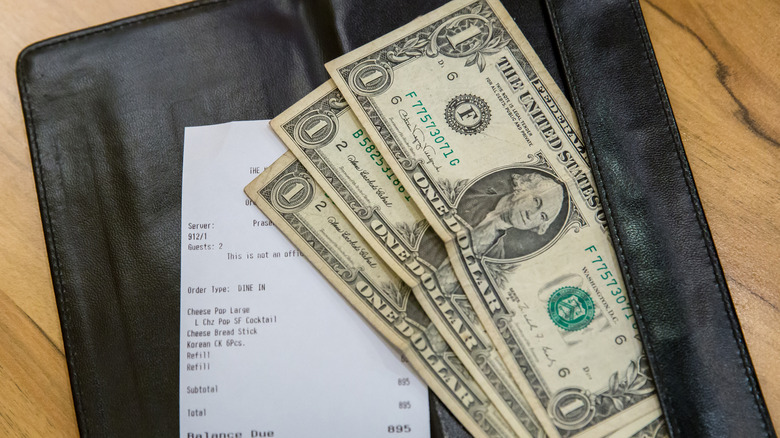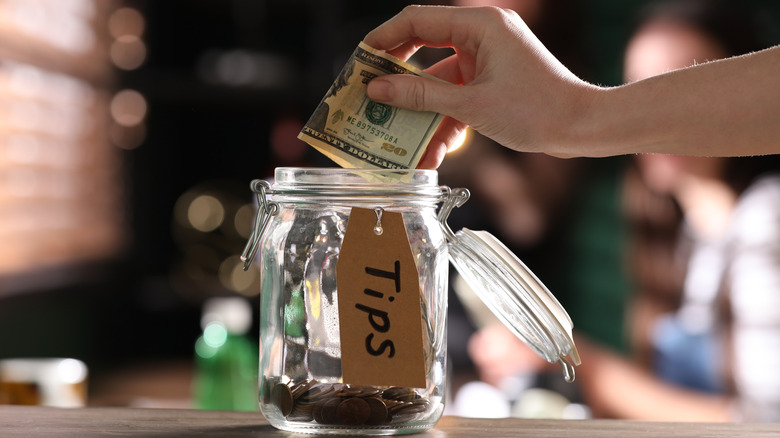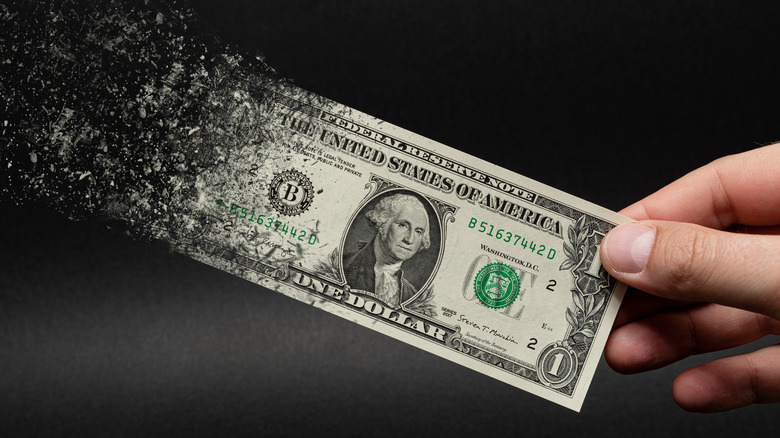How High Can Tipping Percentages Really Go?
When most people go to a restaurant, they do so with the understanding that their check will have an extra charge tacked onto it. All across America, it's considered standard practice to give the service employee a specific amount of money, which can be expressed as a percentage of the total bill.
On its surface, the practice of tipping makes sense. A person whips you up a cup of joe or carries a steaming hot plate of food out to your table, and you give them money for doing so. However, determining how much you should tip different service employees has always been a difficult task, and recently, folks have been being asked to tip more often, and in greater amounts, than ever before (via CNBC). Larger groups will usually find the tip, or service charge, already added to the check, depending on the restaurant's policy, and over-tipping on that charge is up to the guest.
However, the strain that many companies, particularly those in the hospitality industry, felt during the COVID-19 pandemic has added an additional layer of complication to the tipping culture.
Tipping by the numbers
Giving a tip to your server hasn't always cost an arm and a leg. At one point, you only needed to add an extra 10% to the tab for your waiter, per Rutgers. Things began to change around the '70s when the standard tip at some upper-end establishments rose to 15%. In the '90s, 20% tips started to become the norm. A survey carried out by PlayUSA revealed that in 2022, just under half of all restaurant diners gave a 20% tip to their servers, and 17% had given out a tip in excess of 20%.
During the COVID-19 pandemic, tipping etiquette changed. Though CNBC tells us that the average tip is currently a smaller percentage than it was during the pandemic, there are still some places where high tips are the norm. The citizens of both New Hampshire and Ohio are the biggest tippers –- 19% of them routinely dole out 25% gratuities (via Upgraded Points).
The sordid history of tipping in America
According to TIME, tipping as a custom in the United States dates back to a problematic point in our nation's history. After slavery was abolished, restaurants realized that they could hire workers without paying them a wage, so long as restaurant guests were giving the employees a gratuity. This continued legacy of involuntary servitude and action wasn't taken to end the practice of wageless work until the 1900s.
Though nowadays, it's illegal for employers to not pay their employees, the 1960s saw the introduction of the tip credit, which allows restaurants to pay tipped employees less than the minimum wage (per 7Shifts). In 1996, the lowest amount that a company could pay a tipped employee per hour was frozen at $2.13, and in most of the country, that amount has never risen. As such, servers have become reliant on tips to make a living, therefore making the practice essentially inextricable from the American restaurant experience. Cornell University's School of Hotel Administration professor Michael Lynn tells PBS that social pressure will make ending tipping culture virtually impossible, which means that the polite percentage could continue to increase indefinitely.


